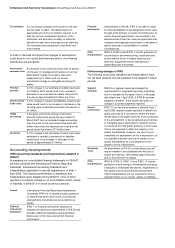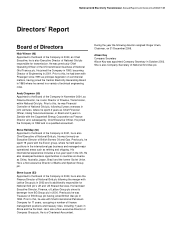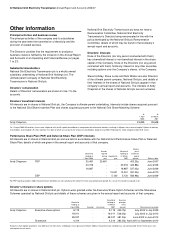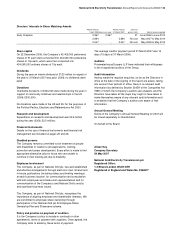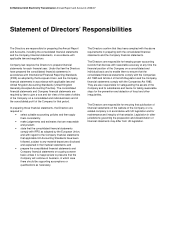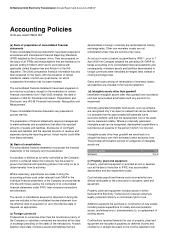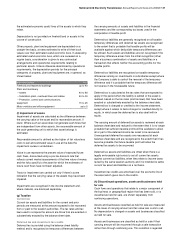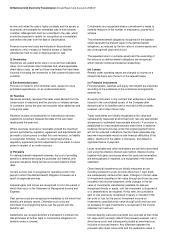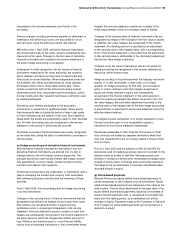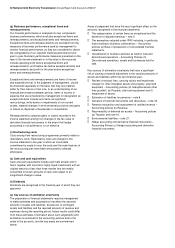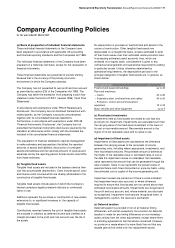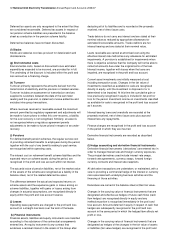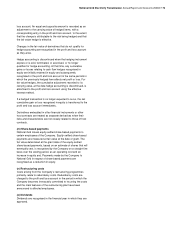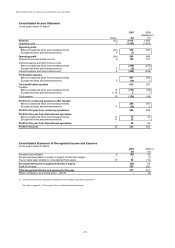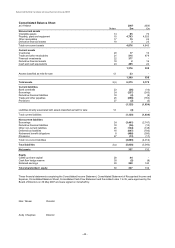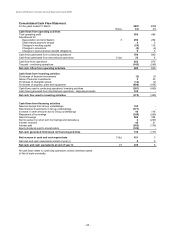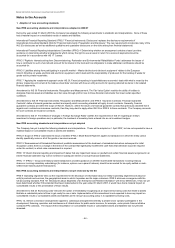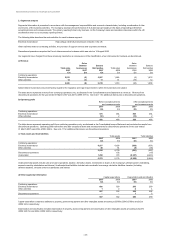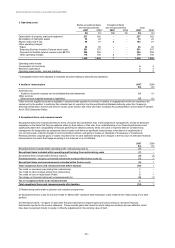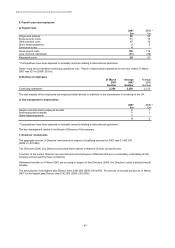National Grid 2007 Annual Report Download - page 42
Download and view the complete annual report
Please find page 42 of the 2007 National Grid annual report below. You can navigate through the pages in the report by either clicking on the pages listed below, or by using the keyword search tool below to find specific information within the annual report.40 National Grid Electricity Transmission Annual Report and Accounts 2006/07
(q) Business performance, exceptional items and
remeasurements
Our financial performance is analysed into two components:
business performance, which excludes exceptional items and
remeasurements; and exceptional items and remeasurements.
Exceptional items and remeasurements are excluded from the
measures of business performance used by management to
monitor financial performance, as they are considered to distort
the comparability of our reported financial performance from
year to year. Business performance measures presented on the
face of the income statement or in the notes to the accounts
include operating profit before exceptional items and
remeasurements, profit before tax before exceptional items and
remeasurements and profit for the year before exceptional
items and remeasurements.
Exceptional items and remeasurements are items of income
and expenditure that, in the judgment of management, should
be disclosed separately on the basis that they are material,
either by their nature or their size, to an understanding of our
financial performance between periods. Items of income or
expense that are considered by management for designation as
exceptional items include such items as significant
restructurings, write-downs or impairments of non-current
assets, material changes in environmental provisions and gains
or losses on disposals of businesses or investments.
Remeasurements comprise gains or losses recorded in the
income statement arising from changes in the fair value of
derivative financial instruments to the extent that hedge
accounting is not achieved or is not effective.
(r) Restructuring costs
Costs arising from restructuring programmes primarily relate to
redundancy costs. Redundancy costs are charged to the
income statement in the year in which an irrevocable
commitment is made to incur the costs and the main features of
the restructuring plan have been announced to affected
employees.
(s) Cash and cash equivalents
Cash and cash equivalents include cash held at bank and in
hand, together with short-term highly liquid investments with an
original maturity of less than three months that are readily
convertible to known amounts of cash and subject to an
insignificant change in value.
(t) Dividends
Dividends are recognised in the financial year in which they are
approved.
(u) Key sources of estimation uncertainty
The preparation of financial statements requires management
to make estimates and assumptions that affect the reported
amounts of assets and liabilities, disclosures of contingent
assets and liabilities and the reported amounts of revenue and
expenses during the reporting period. Actual results could differ
from these estimates. Information about such judgements and
estimation is contained in the accounting policies and/or the
notes to the accounts, and the key areas are summarised
below.
Areas of judgement that have the most significant effect on the
amounts recognised in the financial statements:
1 The categorisation of certain items as exceptional and the
definition of adjusted earnings – note 5.
1 The exemptions adopted under IFRS including, in particular,
those relating to business combinations – Accounting
policies (a) Basis of preparation of consolidated financial
statements.
1 Classification of business activities as held for sale and
discontinued operations – Accounting Policies (h)
Discontinued operations, assets and businesses held for
sale.
Key sources of estimation uncertainty that have a significant
risk of causing a material adjustment to the carrying amounts of
assets and liabilities within the next financial year:
1 Review of residual lives, carrying values and impairment
charges for other intangible assets and property, plant and
equipment – Accounting policies (d) Intangible assets other
than goodwill, (e) Property, plant and equipment and (f)
Impairment of assets.
1 Estimation of liabilities for pensions – note 8.
1 Valuation of financial instruments and derivatives – note 18.
1 Revenue recognition and assessment of unbilled revenue –
Accounting policies (k) Revenue.
1 Recoverability of deferred tax assets – Accounting policies
(g) Taxation and note 16.
1 Environmental liabilities – note 27.
1 Hedge accounting and derivative financial instruments –
Accounting Polices (o) Hedge accounting and derivative
financial instruments.


